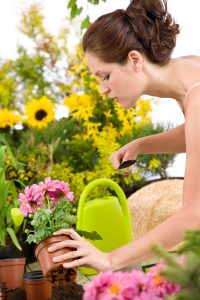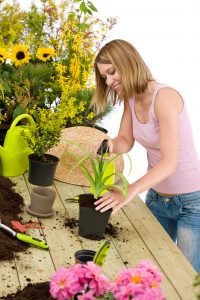How to Transplant a Plant
 Transplanting a plant can actually have multiple meanings. It could simply mean that you are moving a house plant indoors. Or, you could be unearthing a plant from its current soil and placing it in an area with different soil.
Transplanting a plant can actually have multiple meanings. It could simply mean that you are moving a house plant indoors. Or, you could be unearthing a plant from its current soil and placing it in an area with different soil.
In most instances, gardeners typically mean the latter scenario when referring to transplanting. Here are some helpful guidelines on how you can do this:
Transplant at the Right Time
It is important to transplant your seedlings at the right time. This period can vary from plant to plant. One of the best ways to determine when the plant is ripe for transplantation is to check the seed packet. This information is often provided in the number of days preceding or the following spring.
At the same time, you should take the current weather conditions in your region into consideration as well. You should avoid transplanting in the summer as the temperatures and conditions are too harsh.
Prep the Soil
The first thing you will need to do is to loosen the soil where the plant will be transplanted. Do this up to a couple of inches into the soil. This will also give you a good chance to check whether there is enough moisture in the soil. It is important that there is enough of water in the soil so that the soil doesn’t draw the moisture from the roots. Mix a lot of organic matter into the soil and then level it out.
There are some plants that flourish in warm weather and warm soil. To create these conditions, you can place black plastic over the plot and tighten down the edges by burying them. Leave the plastic on top for about two weeks so that the heat from the sun can be absorbed into the soil.
Moving to the Garden
 If you are moving the plant from one indoor container to another, you don’t have to worry about hardening the plant. However, if the plant is being transplanted to an outdoor garden, you will need to stop feeding the plant up to two weeks before it is transplanted. You should also minimize how much you water it as well.
If you are moving the plant from one indoor container to another, you don’t have to worry about hardening the plant. However, if the plant is being transplanted to an outdoor garden, you will need to stop feeding the plant up to two weeks before it is transplanted. You should also minimize how much you water it as well.
If the plant is in a pot, dislodge it by gently turning the pot on its side and loosening all of the soil. You should remember to never grasp the plant by the stem – only by the leaves. Place the leaves in a shallow hole that you have dug in the new plot. Spread the roots out and then pile soil over it, gently tamping down as you do so. Then, water it well and continue to provide it with lots of water until it has fully assimilated.
Preventing Shock
It is almost impossible to prevent shock when transplanting roots. However, to reduce the possibility, minimize any damage done to the root and make sure to keep it moisturized. The more roots that the plant has, the less shock there will be. If you feel like your plant is failing, trim some of the leaves. This way, the plant can focus its resources on re-growing its roots.
This is how you can transplant a plant with as little damage done to flora as possible.
To learn more about vegetable gardening of various kinds, you should absolutely check out The MiniFarming Guide to Vegetable Gardening.
